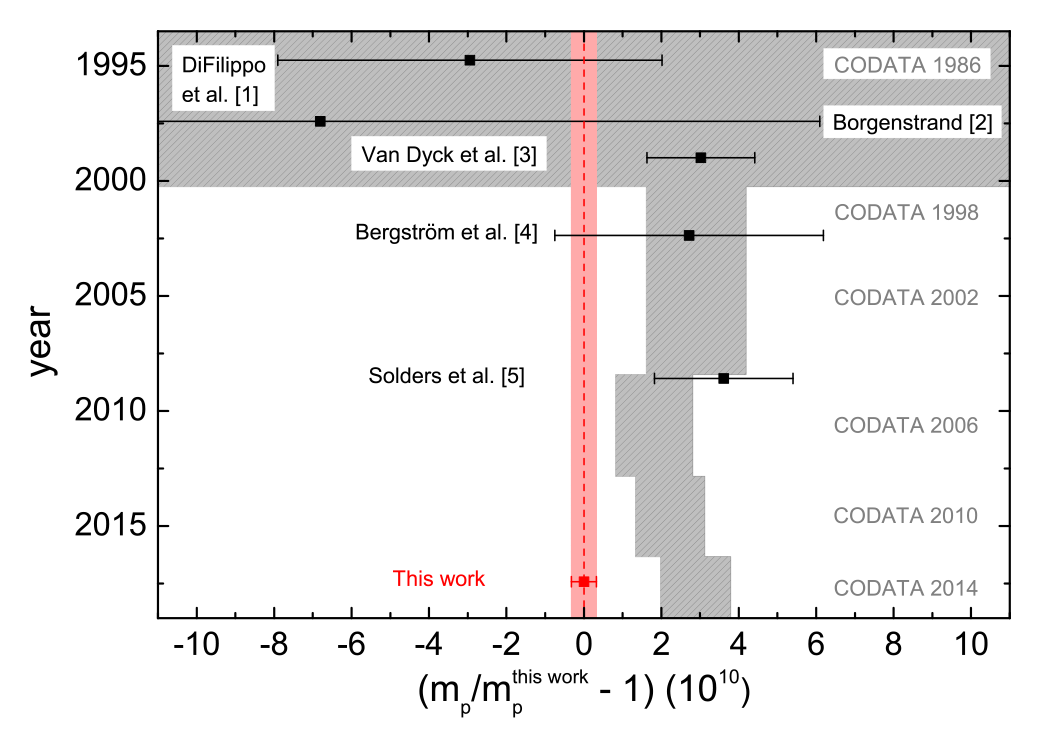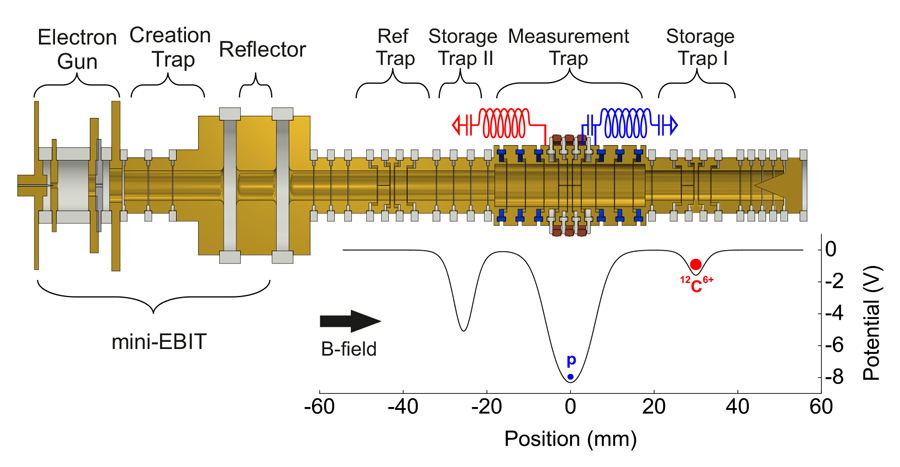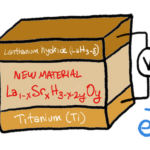What is the weight of a proton? Scientists from Germany and Japan have made an important step toward better understanding this fundamental constant. By means of precision measurements on a single proton, they were able to improve the precision by a factor of three and also correct the existing value.
To determine the mass of a single proton more accurately, the group of physicists from the Max Planck Institute for Nuclear Physics in Heidelberg and RIKEN in Japan performed an important high-precision measurement in a greatly advanced Penning trap system, designed by Sven Sturm and Klaus Blaum from MPI-K, using ultra-sensitive single particle detectors that were partly developed by RIKEN’s Ulmer Fundamental Symmetries Laboratory.
The proton is the nucleus of the hydrogen atom and one of the basic building blocks of all other atomic nuclei. Therefore, the proton’s mass is an important parameter in atomic physics: it is one of the factors that affect how the electrons move around the atomic nucleus. This is reflected in the spectra, i.e., the light colours (wavelengths) that atoms can absorb and emit again. By comparing these wavelengths with theoretical predictions, it is possible to test fundamental physical theories. Further, precise comparisons of the masses of the proton and the antiproton may help in the search for the crucial difference – besides the reversed sign of the charge – between matter and antimatter.

Comparison of the current result to previous values for the proton’s atomic mass
Mainly two Penning-trap experiments contributed to the literature value, the UW-PTMS at the University of Washington and the SMILETRAP spectrometer in Stockholm. The current value disagrees with the latest CODATA value at a level of 3.3 standard deviations.
Penning traps are well-proven as suitable “scales” for ions. In such a trap, it is possible to confine, nearly indefinitely, single charged particles such as a proton, for example, by means of electric and magnetic fields. Inside the trap, the trapped particle performs a characteristic periodic motion at a certain oscillation frequency. This frequency can be measured and the mass of the particle calculated from it. In order to reach the targeted high precision, an elaborate measurement technique was required.
The carbon isotope 12C with a mass of 12 atomic mass units is defined as the mass standard for atoms. “We directly used it for comparison”, says Sven Sturm. “First we stored each one proton and one carbon ion (12C6+) in separate compartments of our Penning trap apparatus, then transported each of the two ions into the central measurement compartment and measured its motion.” From the ratio of the two measured values the group obtained the proton’s mass directly in atomic units. The measurement compartment was equipped with specifically developed purpose-built electronics. Andreas Mooser of RIKEN’s Fundamental Symmetries Laboratory explains its function: “It allowed us to measure the proton under identical conditions as the carbon ion despite its about 12-fold lower mass and 6-fold smaller charge.”
The resulting mass of the proton, determined to be 1.007276466583(15)(29) atomic mass units, is three times more precise than the presently accepted value. The numbers in parentheses refer to the statistical and systematic uncertainties, respectively.
Intriguingly, the new value is significantly smaller than the current standard value. Measurements by other authors yielded discrepancies with respect to the mass of the tritium atom, the heaviest hydrogen isotope (T = 3H), and the mass of light helium (3He) compared to the “semiheavy” hydrogen molecule HD (D = 2H, deuterium, heavy hydrogen). “Our result contributes to solving this puzzle, since it corrects the proton’s mass in the proper direction”, says Klaus Blaum.
Florian Köhler-Langes of MPIK explains how the researchers intend to further improve the precision of their measurement: “In the future, we will store a third ion in our trap tower. By simultaneously measuring the motion of this reference ion, we will be able to eliminate the uncertainty originating from fluctuations of the magnetic field.” The work was published in Physical Review Letters. ?
[vifblike]
What is the weight of a proton? Scientists from Germany and Japan have made an important step toward better understanding this fundamental constant. By means of precision measurements on a single proton, they were able to improve the precision by a factor of three and also correct the existing value.
To determine the mass of a single proton more accurately, the group of physicists from the Max Planck Institute for Nuclear Physics in Heidelberg and RIKEN in Japan performed an important high-precision measurement in a greatly advanced Penning trap system, designed by Sven Sturm and Klaus Blaum from MPI-K, using ultra-sensitive single particle detectors that were partly developed by RIKEN’s Ulmer Fundamental Symmetries Laboratory.
The proton is the nucleus of the hydrogen atom and one of the basic building blocks of all other atomic nuclei. Therefore, the proton’s mass is an important parameter in atomic physics: it is one of the factors that affect how the electrons move around the atomic nucleus. This is reflected in the spectra, i.e., the light colours (wavelengths) that atoms can absorb and emit again. By comparing these wavelengths with theoretical predictions, it is possible to test fundamental physical theories. Further, precise comparisons of the masses of the proton and the antiproton may help in the search for the crucial difference – besides the reversed sign of the charge – between matter and antimatter.

Comparison of the current result to previous values for the proton’s atomic mass
Mainly two Penning-trap experiments contributed to the literature value, the UW-PTMS at the University of Washington and the SMILETRAP spectrometer in Stockholm. The current value disagrees with the latest CODATA value at a level of 3.3 standard deviations.
Penning traps are well-proven as suitable “scales” for ions. In such a trap, it is possible to confine, nearly indefinitely, single charged particles such as a proton, for example, by means of electric and magnetic fields. Inside the trap, the trapped particle performs a characteristic periodic motion at a certain oscillation frequency. This frequency can be measured and the mass of the particle calculated from it. In order to reach the targeted high precision, an elaborate measurement technique was required.
The carbon isotope 12C with a mass of 12 atomic mass units is defined as the mass standard for atoms. “We directly used it for comparison”, says Sven Sturm. “First we stored each one proton and one carbon ion (12C6+) in separate compartments of our Penning trap apparatus, then transported each of the two ions into the central measurement compartment and measured its motion.” From the ratio of the two measured values the group obtained the proton’s mass directly in atomic units. The measurement compartment was equipped with specifically developed purpose-built electronics. Andreas Mooser of RIKEN’s Fundamental Symmetries Laboratory explains its function: “It allowed us to measure the proton under identical conditions as the carbon ion despite its about 12-fold lower mass and 6-fold smaller charge.”
The resulting mass of the proton, determined to be 1.007276466583(15)(29) atomic mass units, is three times more precise than the presently accepted value. The numbers in parentheses refer to the statistical and systematic uncertainties, respectively.
Intriguingly, the new value is significantly smaller than the current standard value. Measurements by other authors yielded discrepancies with respect to the mass of the tritium atom, the heaviest hydrogen isotope (T = 3H), and the mass of light helium (3He) compared to the “semiheavy” hydrogen molecule HD (D = 2H, deuterium, heavy hydrogen). “Our result contributes to solving this puzzle, since it corrects the proton’s mass in the proper direction”, says Klaus Blaum.
Florian Köhler-Langes of MPIK explains how the researchers intend to further improve the precision of their measurement: “In the future, we will store a third ion in our trap tower. By simultaneously measuring the motion of this reference ion, we will be able to eliminate the uncertainty originating from fluctuations of the magnetic field.” The work was published in Physical Review Letters. ?
[vifblike]
Heiße F. et al. (2017). High-precision measurement of the proton’s atomic mass. Phys Rev Lett. doi: 10.1103/PhysRevLett.119.033001











